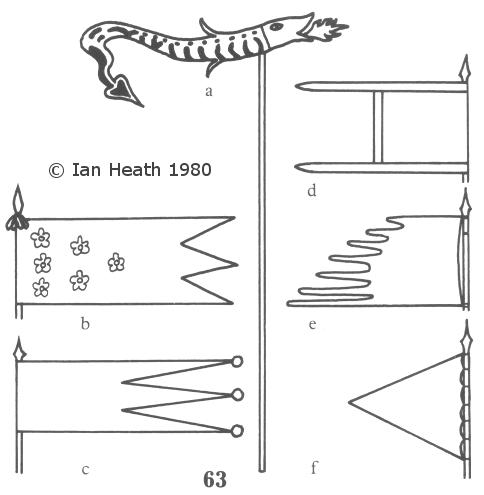
Join Amazon Prime - Watch Thousands of Movies & TV Shows Anytime - Start Free Trial Now
CAROLINGIAN AND OTTONIAN STANDARDS
An extract from Armies of the Dark Ages 600-1066by Ian Heath



63. CAROLINGIAN AND OTTONIAN STANDARDS
63a shows a Carolingian draco standard of windsock design, another inheritance from the late Romans, from a ms. dating between 841 and 872. It would probably have been red, heavily embroidered, with a silver or metal head.
63b is from an 18th century sketch of an early-9th century mosaic in the Lateran which has since been altered beyond recognition. In the original it is shown being presented to Charlemagne by St. Peter and therefore possibly represents the Emperor's personal standard.
63c is a typical 9th century banner, each of the 3 tails here ending in a cotton or wool bobble. 63d and e are from coins of Conrad I (911-918) and Otto III (994-1002) respectively. 63f is a simple lance pennon, others being like those described under 126a-h.
Notker records the Cope of St. Martin being carried as a battle standard by the Carolingian kings and other religious banners are recorded in various sources. A banner of St. Denis was adopted by the Merovingians as early as c. 630, which may have been rectangular and flaming red like the Oriflamme recorded in later sources (see note 43 in 'Armies of Feudal Europe'), while the early Ottonians carried a standard depicting St. Michael, recorded at both Meresburg and Lechfield.